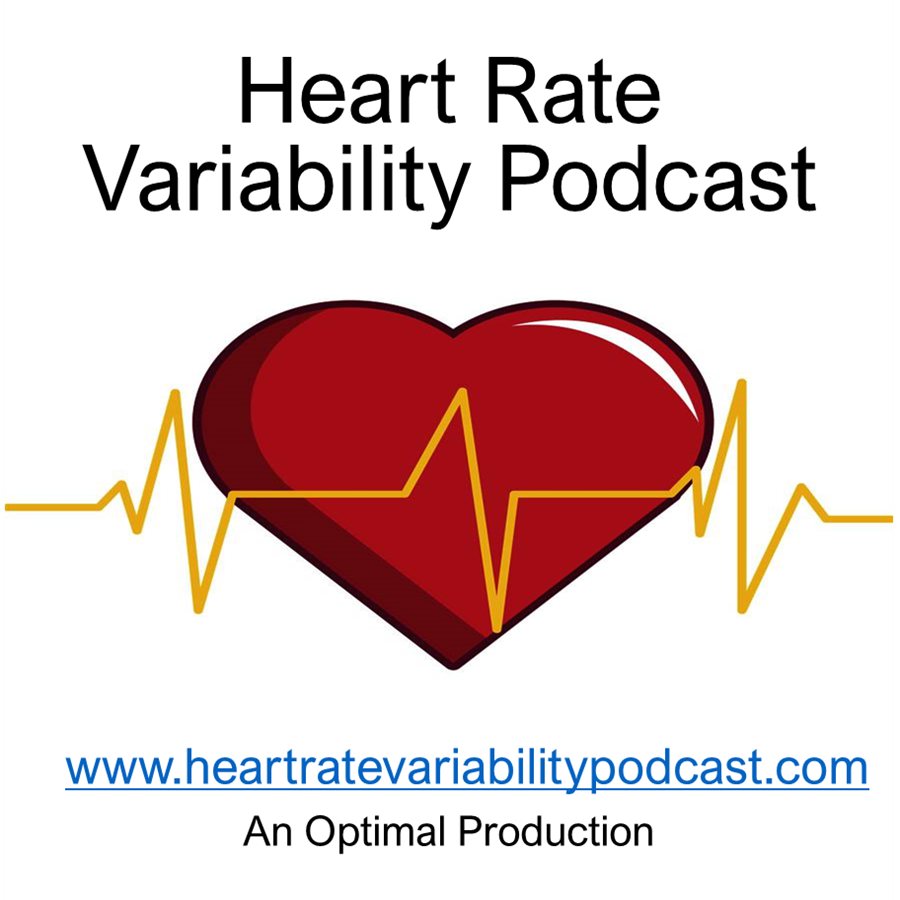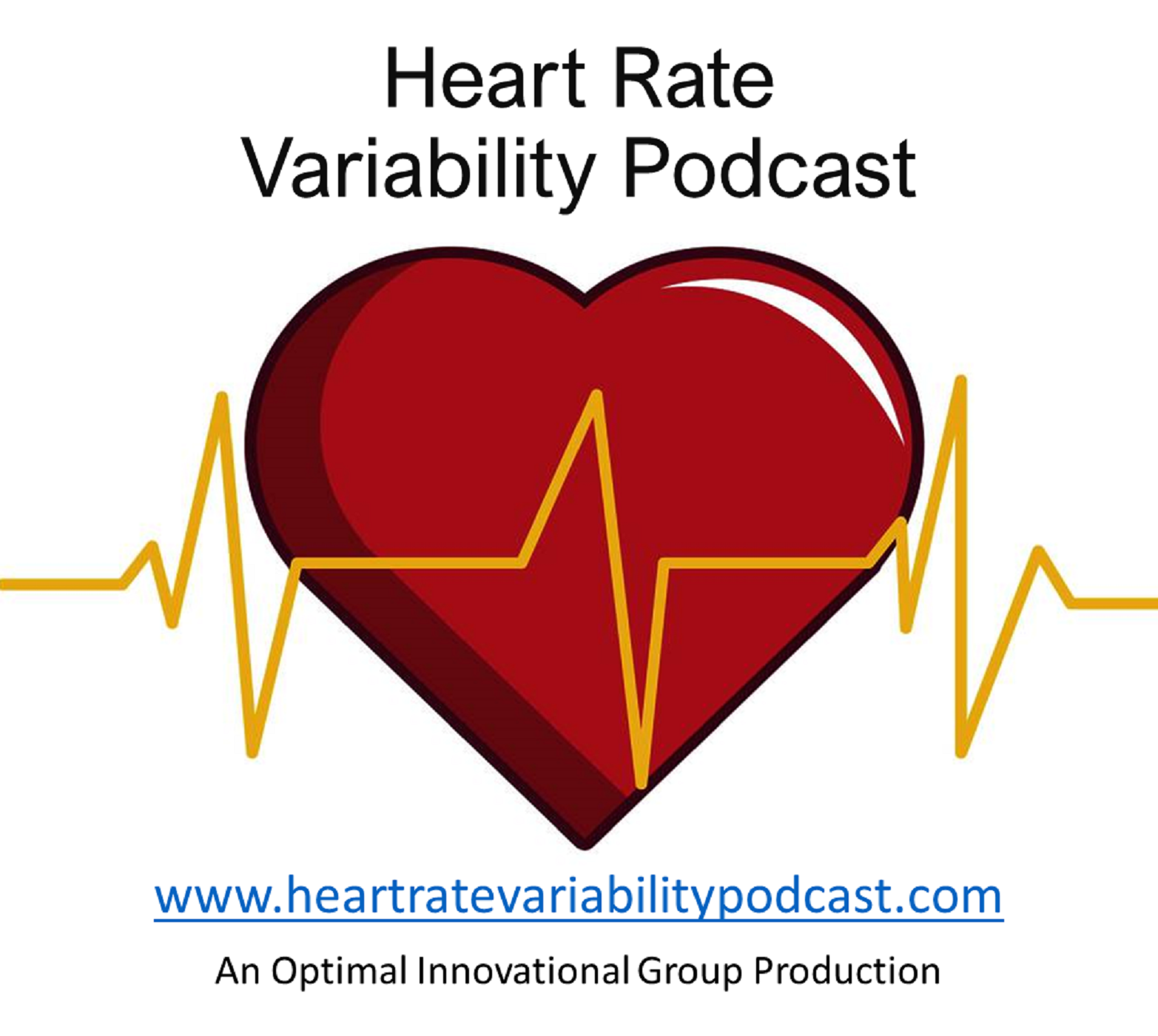[00:00:00] Welcome friends to the Heart Rate Variability Podcast. This week in Heart Rate Variability Edition, each week we explore the latest research and news from the world of hrv. Please consider the information in this podcast for informational purposes only and not as medical advice. Always consult your healthcare provider before applying any strategies we discuss.
[00:00:22] This week we explore four new studies that uncover different dimensions of autonomic function. We begin with a remarkable paper that shows how vagal activity shapes the mechanical strength of each heartbeat as the brain senses it. We then look at a controlled trial comparing box breathing to classic six breaths per minute breathing after high intensity interval training. In the second half of the show, we explore how tolerance, fear of missing out and performance pressure influence real time autonomic responses in Internet gaming disorder. And finally, we examine a feasibility study that lays the groundwork for HRV biofeedback interventions in adults with chronic spinal cord injury.
[00:01:05] Let's begin this week with a remarkable study published in Communications Biology titled Cardiac Vagal Rhythm Echoes on the Heartbeat's Mechanosensory Imprint in the Brain. Authored by Candia, Rivera and Chavez, this paper explores one of the most fascinating questions in the field of interoception how does the brain actually sense each heartbeat? Not metaphorically, but physically. When we talk about the heart brain connection, we often focus on electrical coupling, heart rate, hrv, baroreflex function. But the heart also sends mechanical signals to the brain.
[00:01:40] Every heartbeat produces a tiny shock wave of pressure that travels through the vasculature and the cerebrospinal system until it physically reaches the skull and brain tissue.
[00:01:50] Neurons are not blind to this. Their membranes contain mechanosensitive ion channels, literal pressure sensors that fire in response to these internal waves? But here's the mystery the researchers wanted to solve. What determines how strong each heartbeat feels to the brain? Does vagal tone change the amplitude of the mechanical signal itself, not just the timing? To answer this, Candia, Rivera and Chavez used an elegant non invasive technique called ballistocardiography, which was recorded from the back of the head while participants lay in a horizontal position.
[00:02:25] This allowed them to capture what they call heartbeat strength, a direct biomechanical signal reflecting the strength with which each heartbeat imparts force to the skull and its sensory structures. The next step was to model how ongoing cardiac rhythms shape this mechanical signal. They built computational models comparing hbs with beat to beat, heart rate changes and short term heart rate variability, particularly the high frequency component associated with vagal tone. The results were striking higher HRV is the strongest predictor of heartbeat strength as sensed by the brain. In simpler terms, vagal tone not only regulates the timing of each heartbeat, it helps determine how strongly the heart physically knocks on the brain. This means that the vagus nerve shapes the mechanical signature of the heartbeat, which in turn influences the neural signals produced in response to each beat.
[00:03:20] This is more than a physiological curiosity. It suggests that interoception, our internal sense of the body, may depend partly on the mechanical clarity of heartbeats.
[00:03:31] Emotional experiences shaped by heartbeat evoked responses may vary with vagal tone.
[00:03:37] Practices that increase vagal activity may literally strengthen the body's internal communication channels. Our second story comes from plos One titled Box Breathing or six Breaths per Minute which strategy improves Athletes post hiit Cardiovascular Recovery? By Kossap and Ayden Coaches often assume that box breathing is universally calming, but this study challenges that assumption by placing it directly after high intensity interval training.
[00:04:05] Forty physically active university students completed three identical HIIT cycling sessions, each followed by one of three breathing spontaneous breathing box breathing with a 4444 pattern or six breaths per minute breathing using a five second inhale and five second exhale. The results were clear and clinically significant.
[00:04:26] Box breathing elevated post exercise heart rate and increased perceived exertion. Compared to both spontaneous breathing and 6 breaths per minute breathing, heart rate remained nearly 10 beats per minute higher and RPE scores were also significantly elevated.
[00:04:41] Why? Because box breathing includes two breath hold phases after a taxing workout. These pauses may drive up carbon dioxide and sympathetic activation, increasing physiological strain rather than reducing it. In contrast, six breaths per minute breathing supported smoother autonomic recovery without introducing unnecessary stress. The takeaway is simple. After a strenuous event, choose resonance frequency breathing, not box breathing to maximize recovery. This episode of this week in HRV is brought to you by Optimal hrv. This week's episode is brought to you by Optimal hrv. And with the holidays approaching, we have something special to share. Optimal HRV now offers e gift cards perfect for colleagues, students or anyone you want to support on their journey toward nervous system health. You can use them for app subscriptions, clinician tools and training programs. And starting November 28th through December 1st, we're hosting our Black Friday sale with up to 35% off across the entire platform. It's the best time of the year to add HRV tools to your practice or to equip your team with trauma informed research based biofeedback resources. You can explore gift cards, discounts and all our
[email protected] Our third study turns to the rapidly evolving area of behavioral addiction. Published in Biomedical Engineering online. The paper the Tolerance Related Psychology and Dynamic Activity in the Peripheral Nervous System of Internet Gaming Disorder During Playing Online Games by Chi and Xiao examines how tolerance related psychological traits map onto instantaneous autonomic changes during gameplay.
[00:06:28] The authors recruited 26 healthy gamers and 20 gamers meeting criteria for Internet gaming disorder. They used a high resolution method called instantaneous pulse rate variability to capture autonomic fluctuations at one minute intervals. Psychologically, individuals with IGD reported higher fear of missing out, higher performance standards and a greater sense of inadequacy, all key components of the tolerance process.
[00:06:55] Physiologically, those same individuals showed heightened sympathetic activation and reduced peripheral flexibility even during relatively easy gameplay. At minute six of the first game block the relationships were strongest. Lower very high frequency activity and higher low frequency activity were both correlated with IGD severity and with the inadequacy component of tolerance. This suggests a self reinforcing loop. The pressure to achieve and avoid missing out creates emotional arousal which drives autonomic activation, which in turn reinforces the compulsive drive to keep playing. This study highlights just how quickly within minutes the autonomic signatures of behavioral addiction emerge and how deeply intertwined they are with the psychological components of tolerance.
[00:07:44] Our final study comes from BMC Neurology titled Heart Rate Variability Biofeedback in adults with Chronic Spinal Cord Injury A randomized feasibility study by Schaffel, Aurora Pozzato and colleagues. Spinal cord injury often disrupts sympathetic pathways, weakens baroreflex function and reduces hrv. Many individuals experience autonomic dysreflexia, orthostatic intolerance, pain, fatigue, and emotional regulation challenges. HRV biofeedback may be a promising supportive therapy, but its feasibility in this population remains unknown. This study piloted the first 10 participants of a planned 120 person randomized controlled trial.
[00:08:28] Participants were assigned to either usual care or a 10 week HRV biofeedback program that included in person sessions and home practice with a Polar H10 sensor. The results were encouraging. No serious adverse events occurred. Retention was perfect, no participants withdrew.
[00:08:46] Weekly session adherence was 95% and home practice adherence was about 65%, still impressive for a population managing complex physical challenges. The primary challenges were logistical.
[00:09:00] Recruitment was slow and some cerebral blood flow data were difficult to obtain with transcranial Doppler, but HRV data collection worked flawlessly.
[00:09:10] The authors concluded that a full RCT is feasible with minor protocol adjustments. This sets the stage for future work on autonomic rehabilitation in spinal cord injury, a population with limited non pharmacological options. We've covered a broad range of studies this week, let's turn to our actionable insights. First, for individuals, the mechanosensation study reminds us that vagal tone doesn't just regulate heart rhythm, and it may shape how the brain feels each beat. Practices such as slow breathing, meditation, and HRV biofeedback influence both emotional processing and interoceptive clarity. Meanwhile, resonance frequency breathing remains the gold standard for recovery after strenuous exercise.
[00:09:56] Second, for clinicians, not every breathing technique fits every context. The Box Breathing study is a perfect reminder that what calms the mind during therapy and may strain the body during recovery. The IGD study highlights the growing importance of autonomic metrics in understanding behavioral addictions. The Spinal Cord Injury Feasibility trial suggests that HRV biofeedback could become a necessary adjunctive therapy for autonomic stabilization. Third, for researchers, these studies push the boundaries of what is possible in HRV science. From heartbeat mechanosensation in the brain to instantaneous autonomic modeling during behavior, to the challenges of implementing HRV interventions in complex clinical populations, the field is evolving quickly, and the opportunities are vast.
[00:10:46] Thank you for joining us on the Heart Rate Variability Podcast. Each week, HRV helps us better understand the nervous system's remarkable capacity for adaptability, sensitivity, and healing.
[00:10:58] We'll see you next time.


